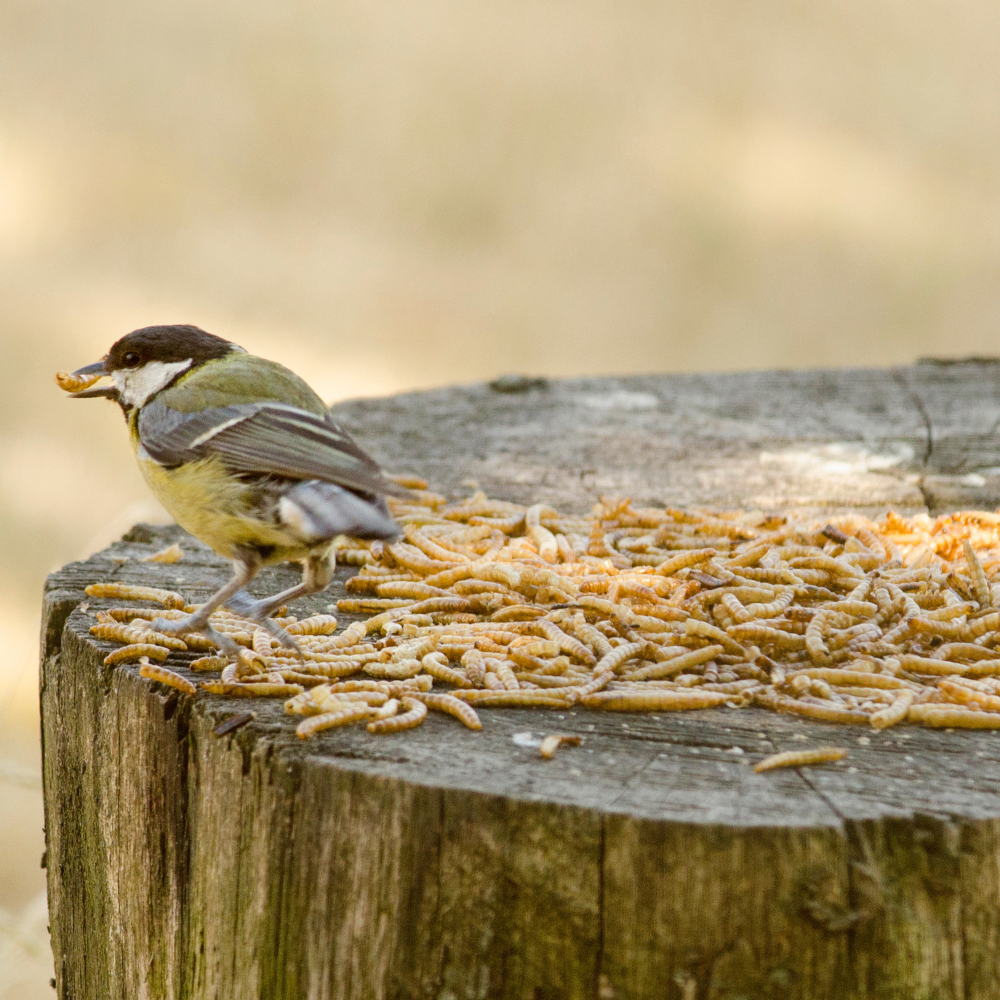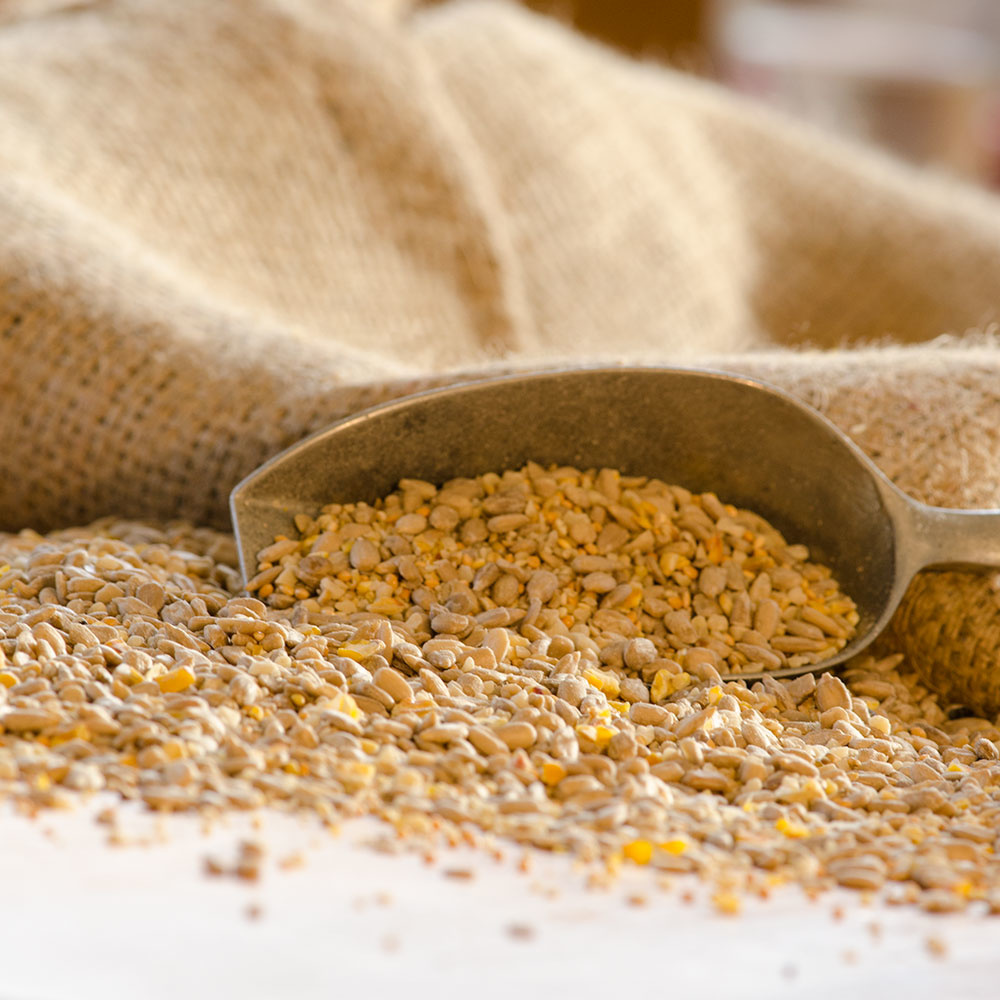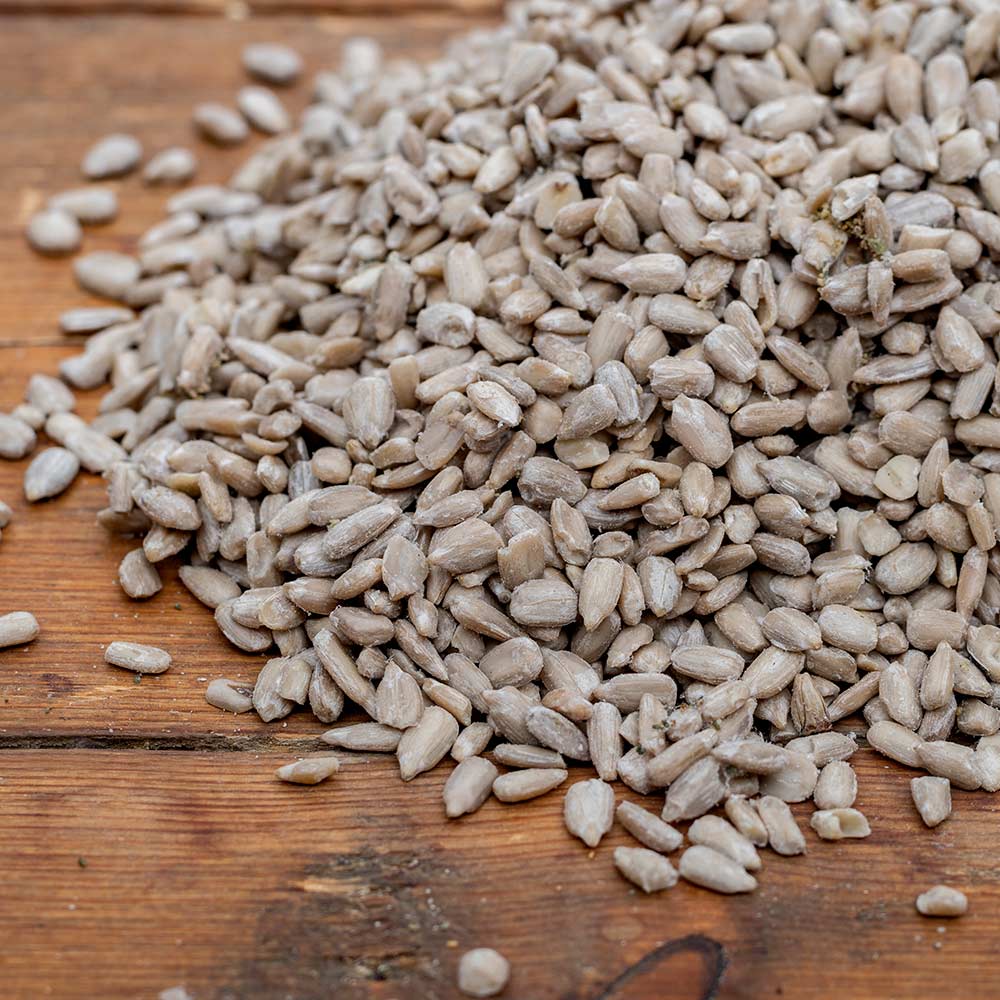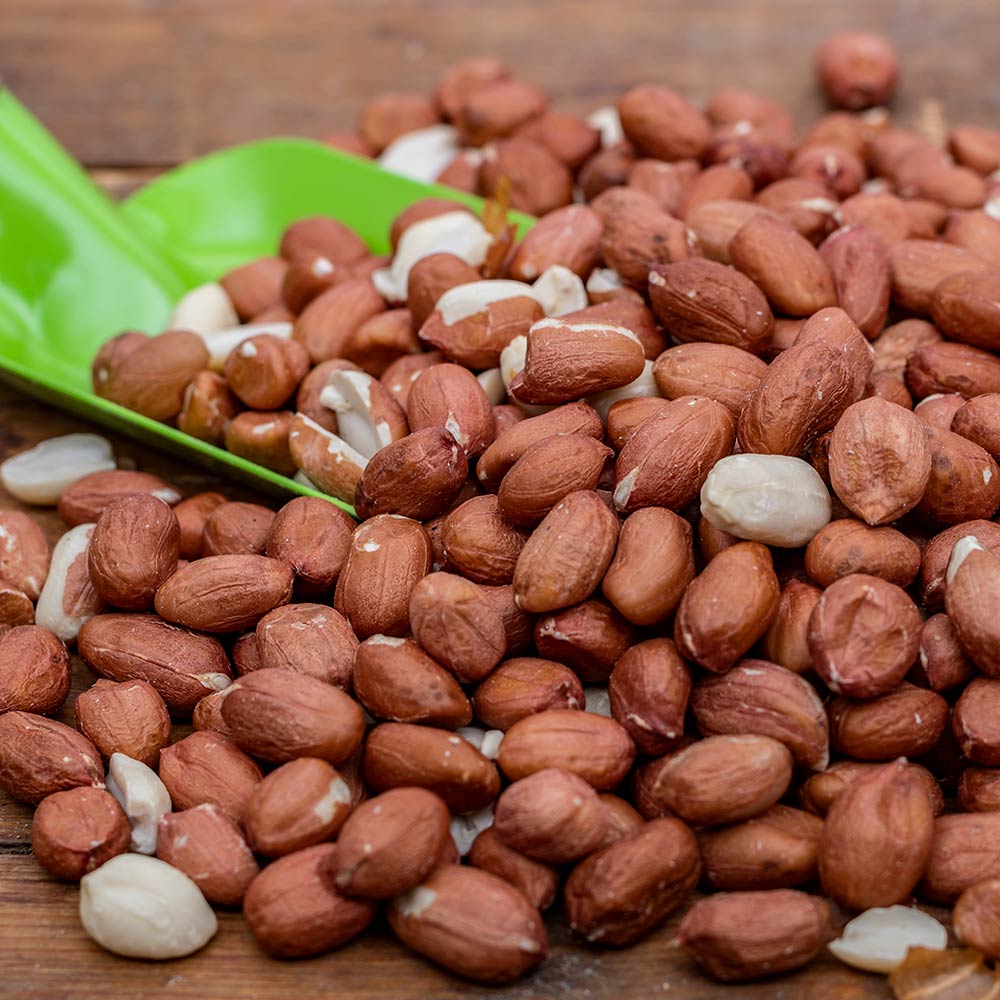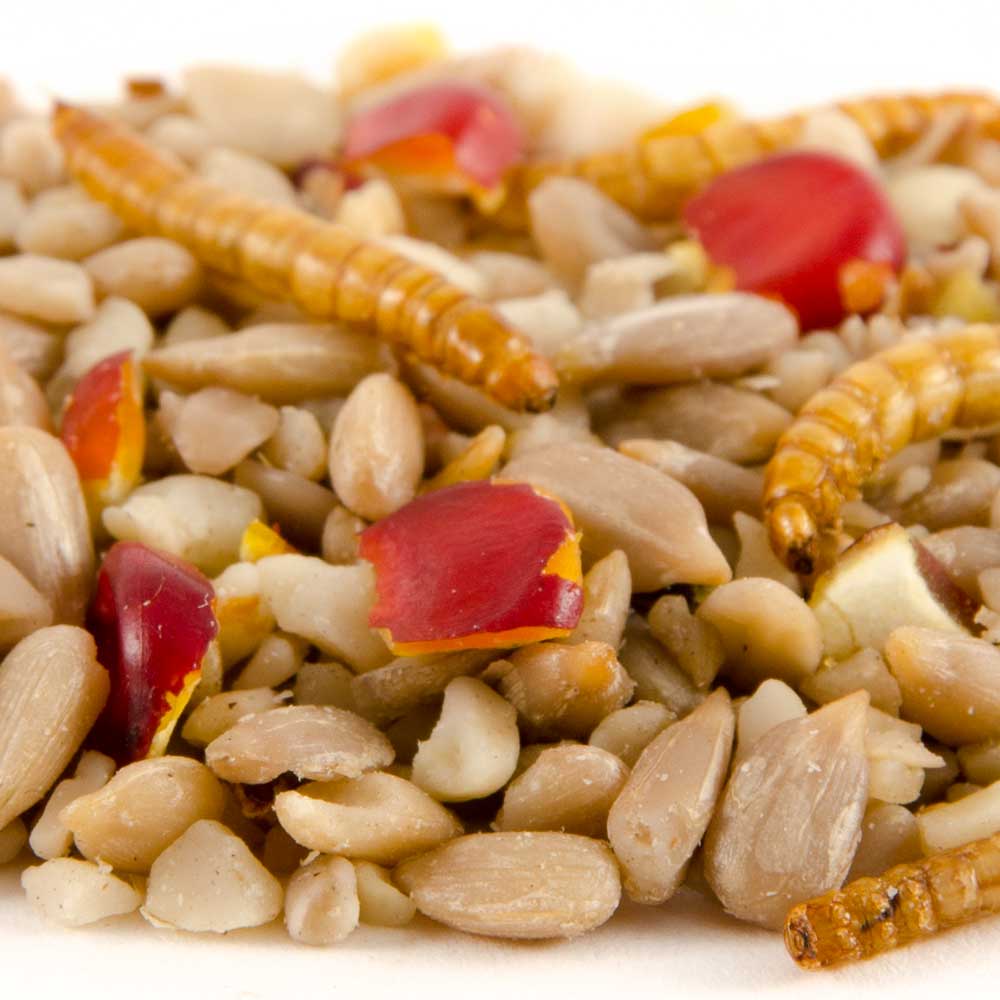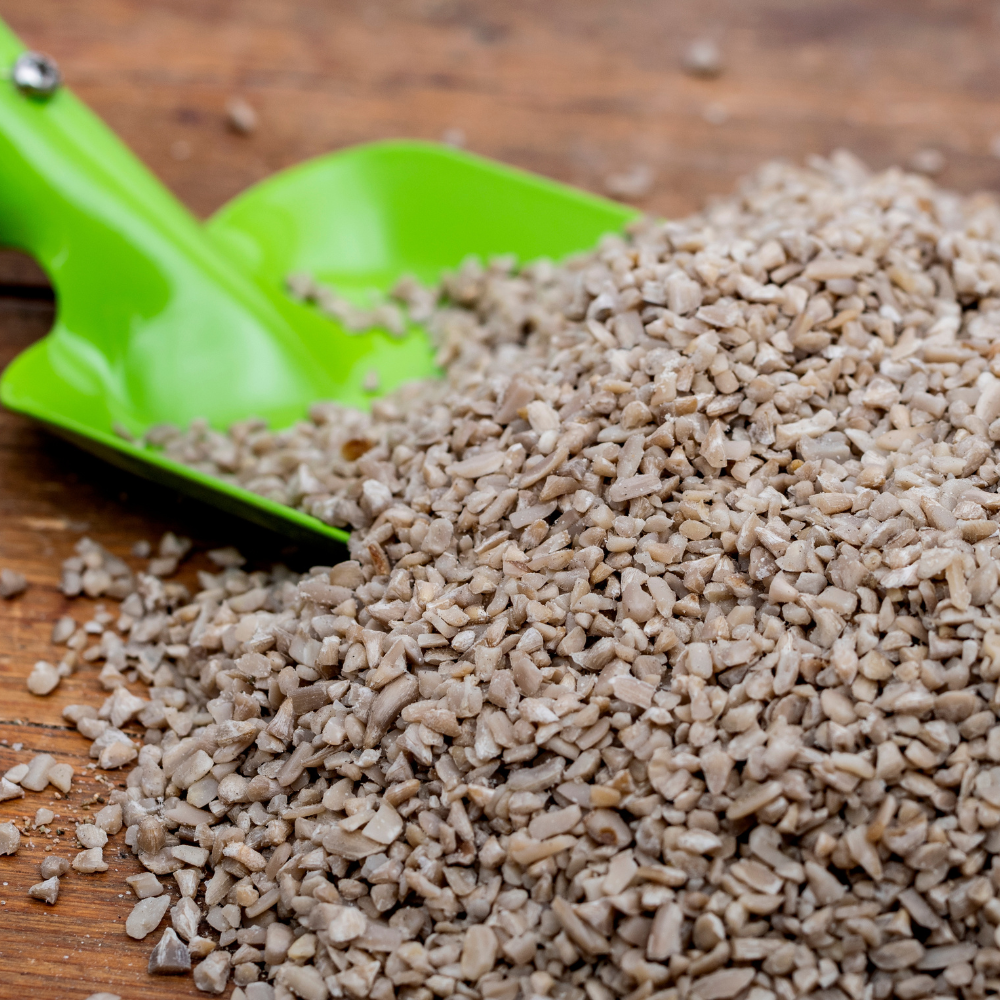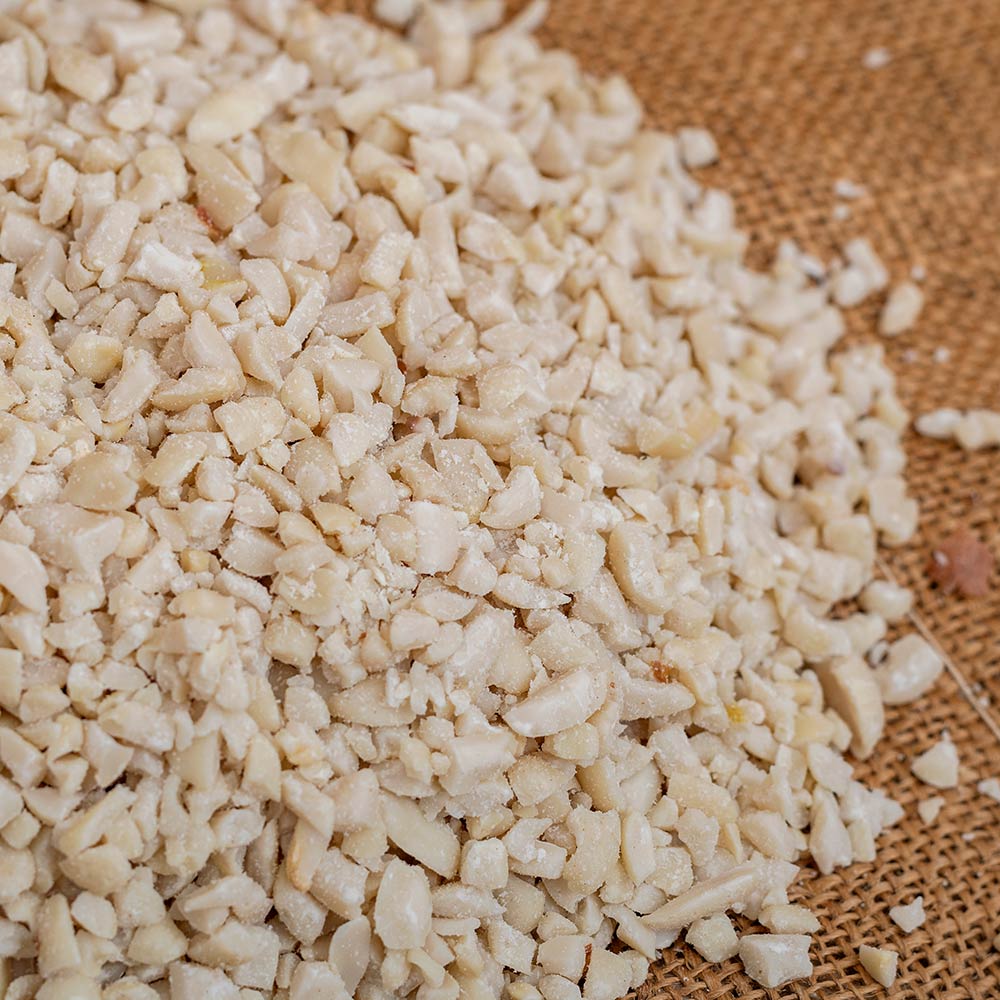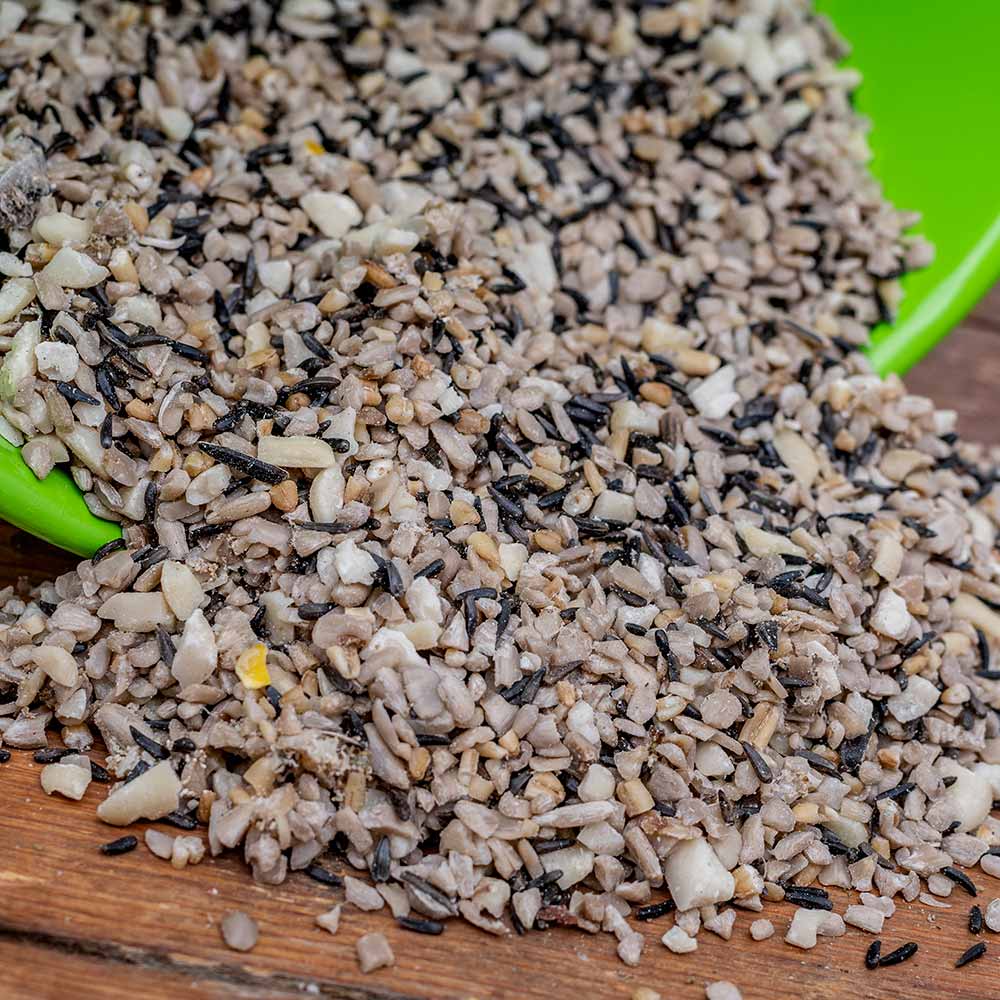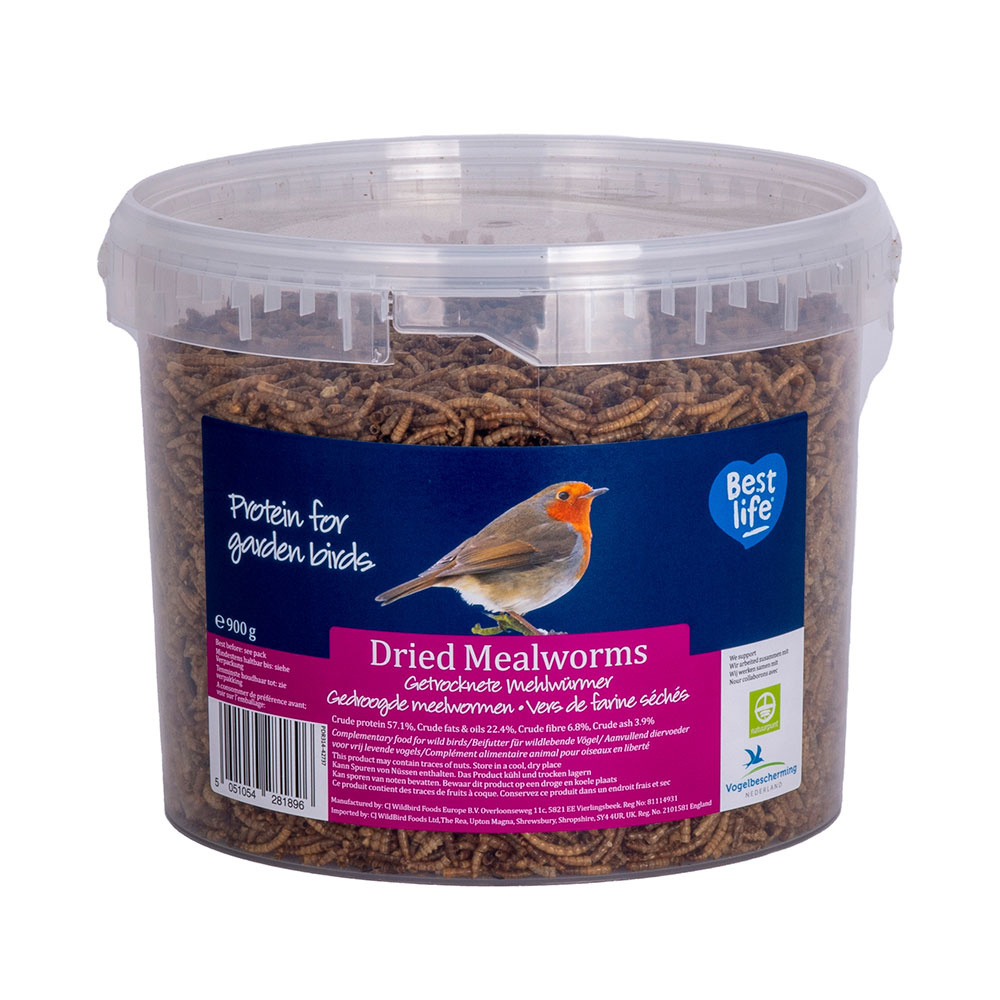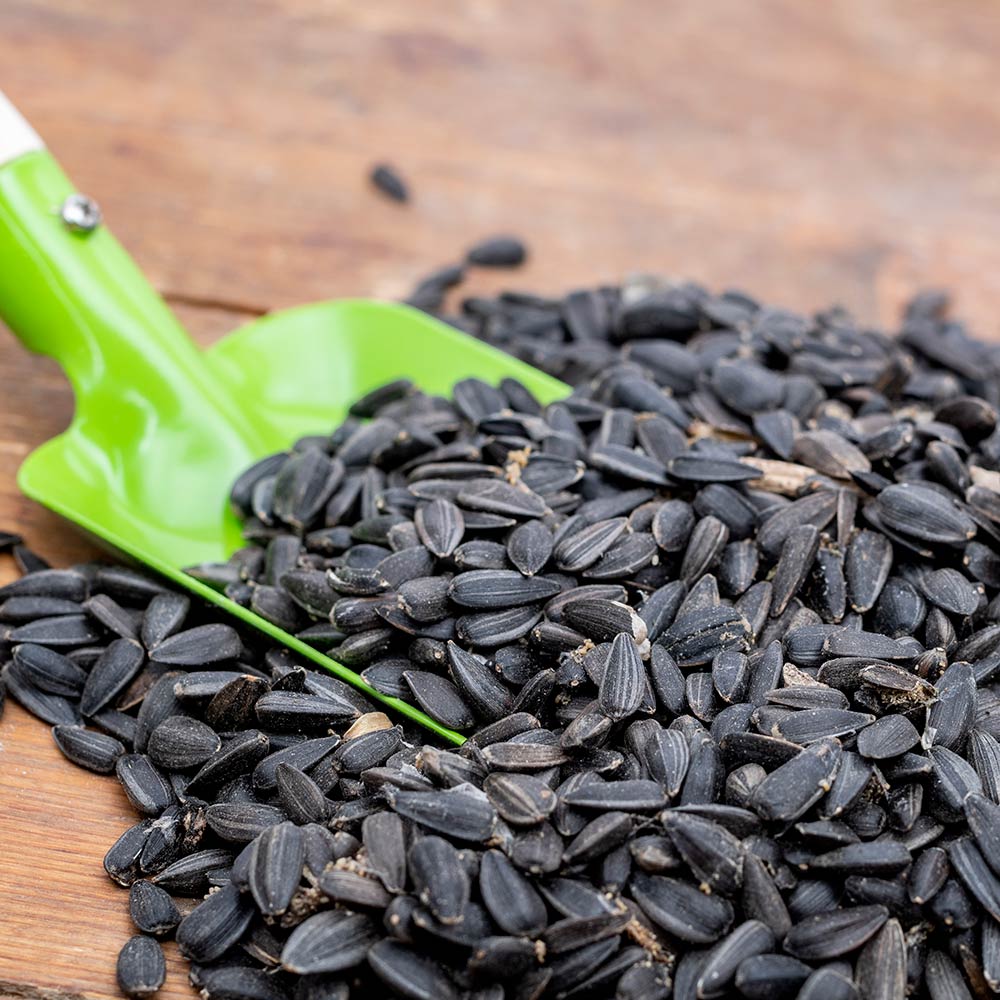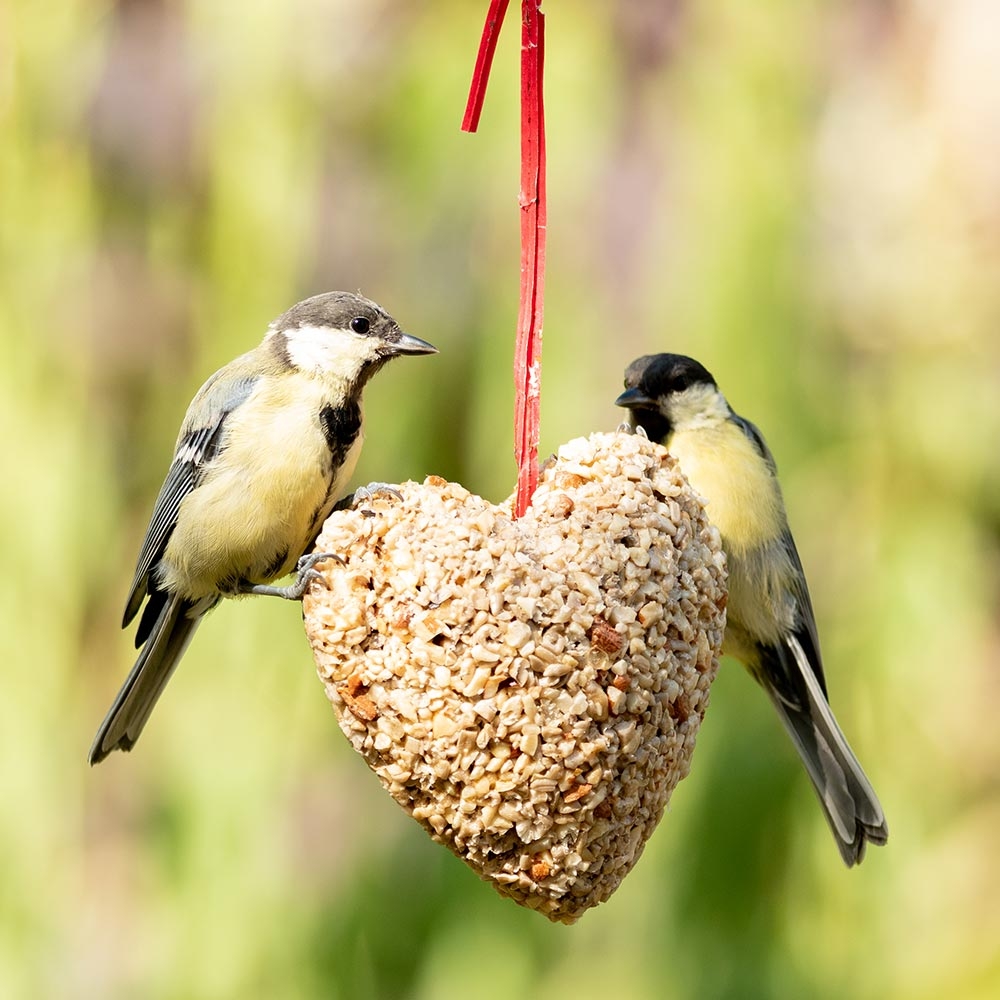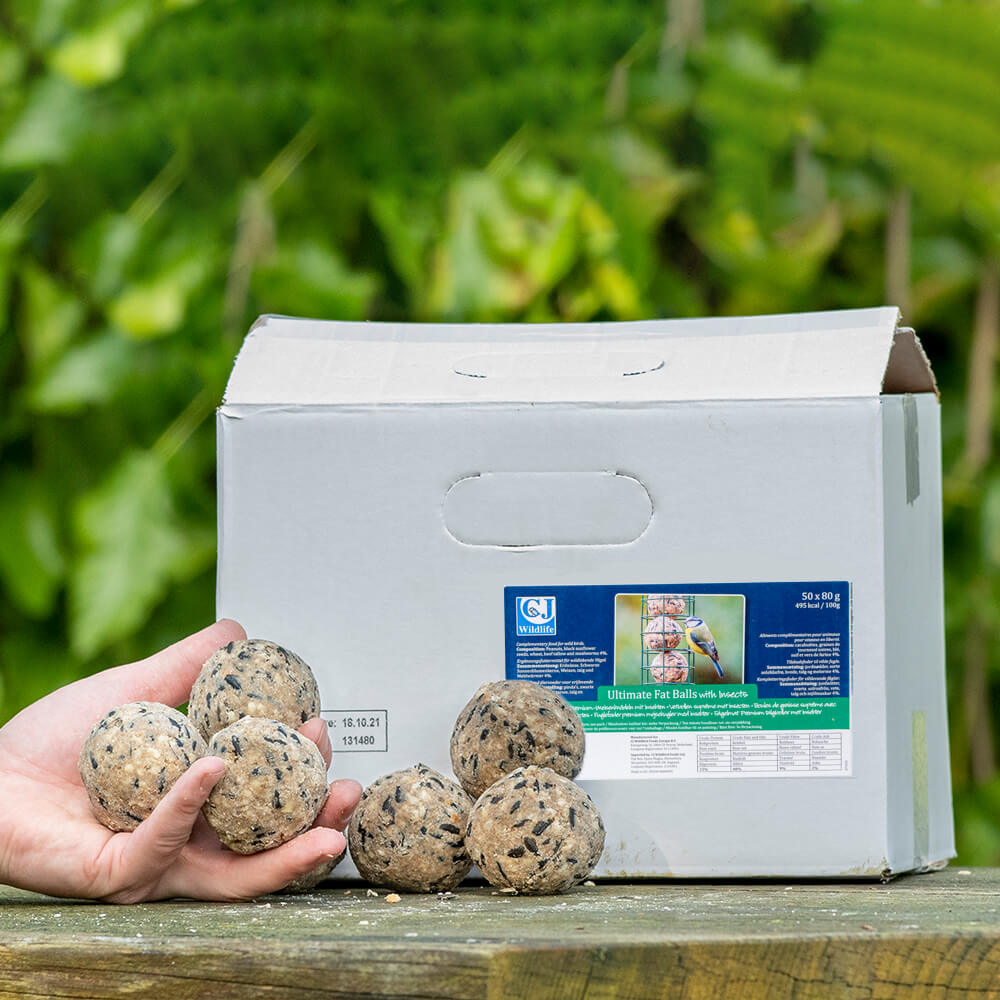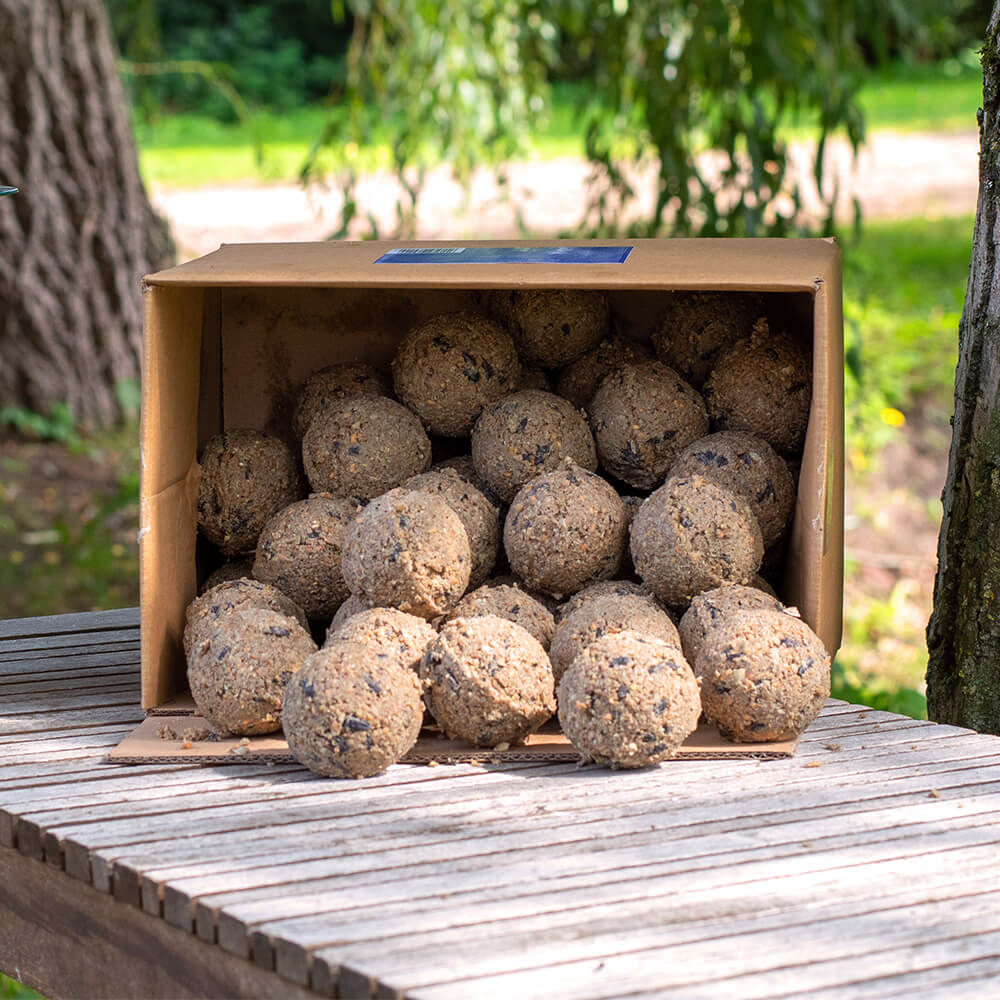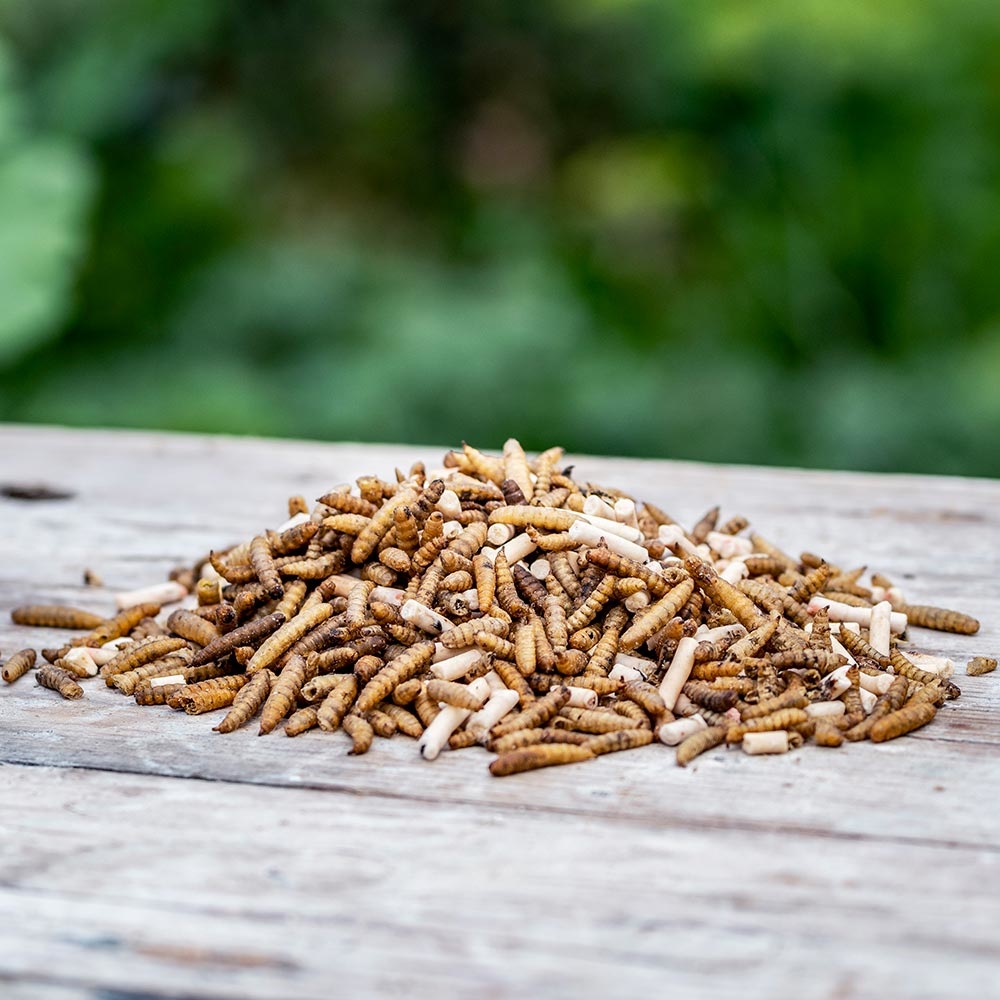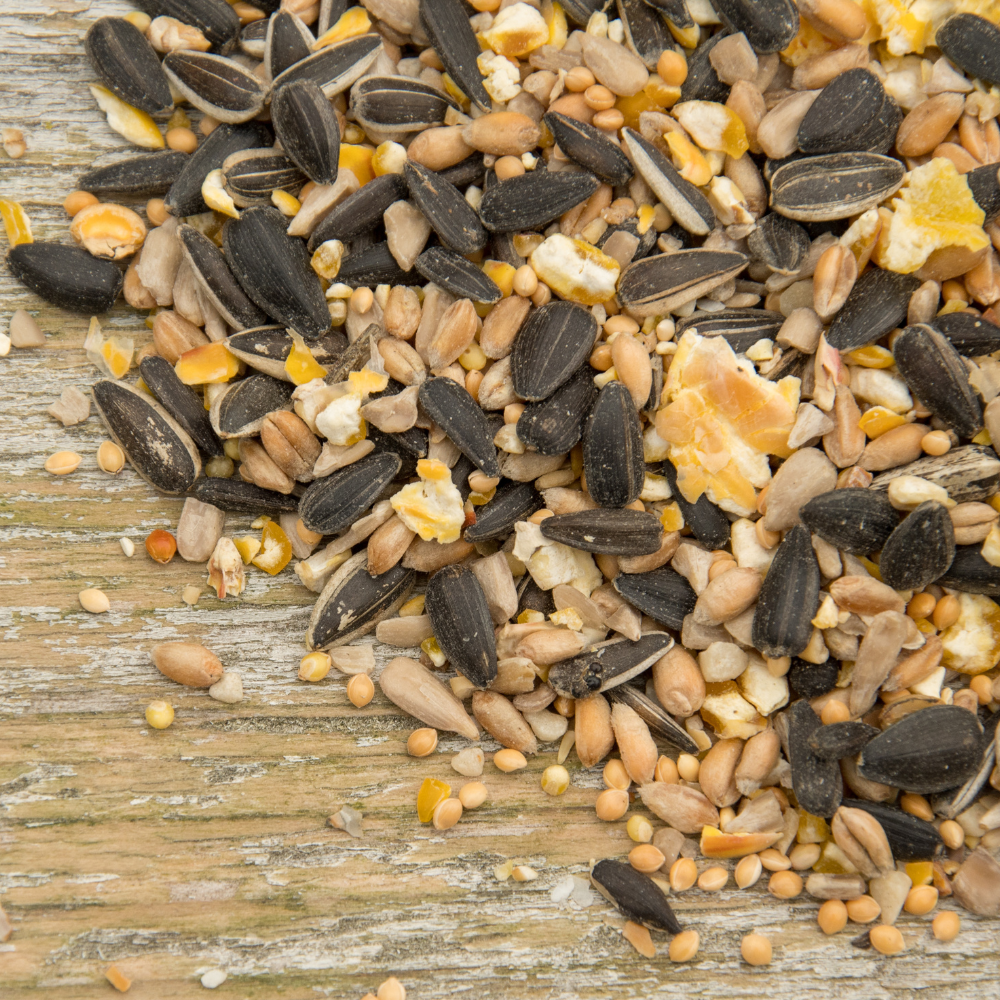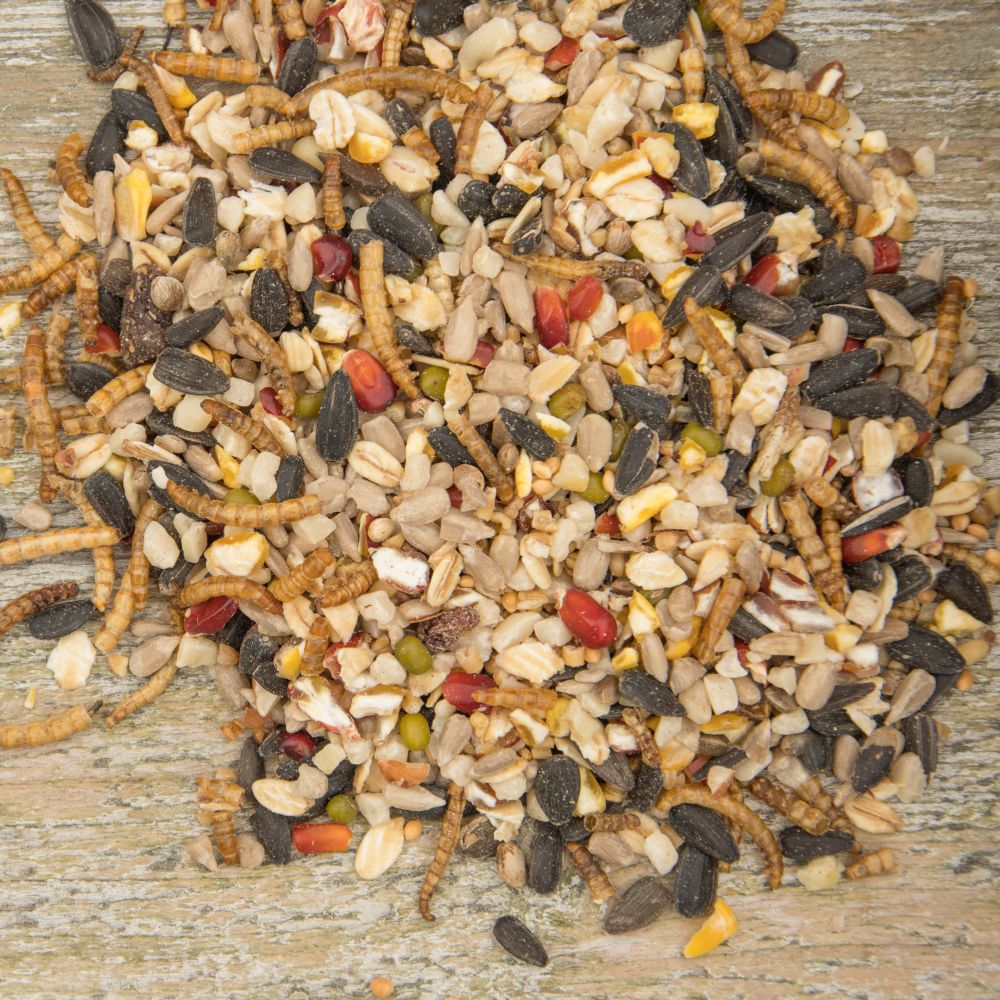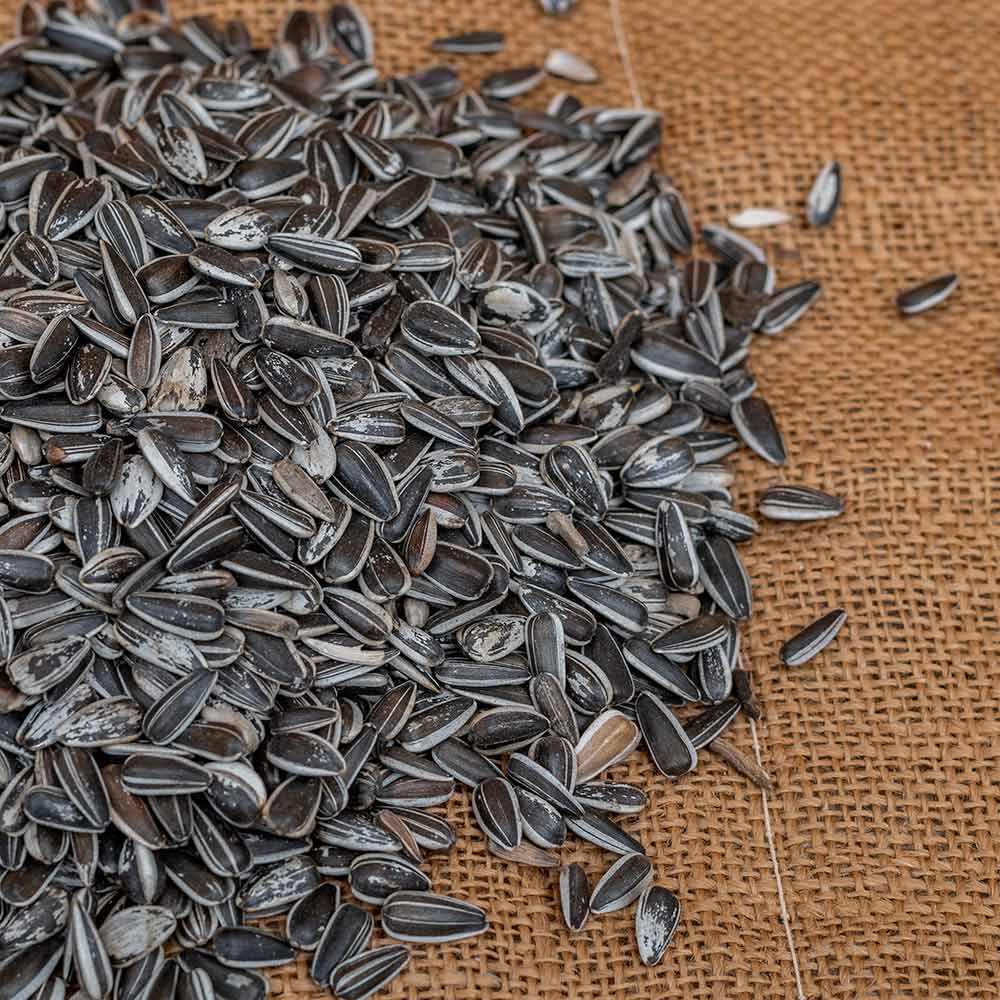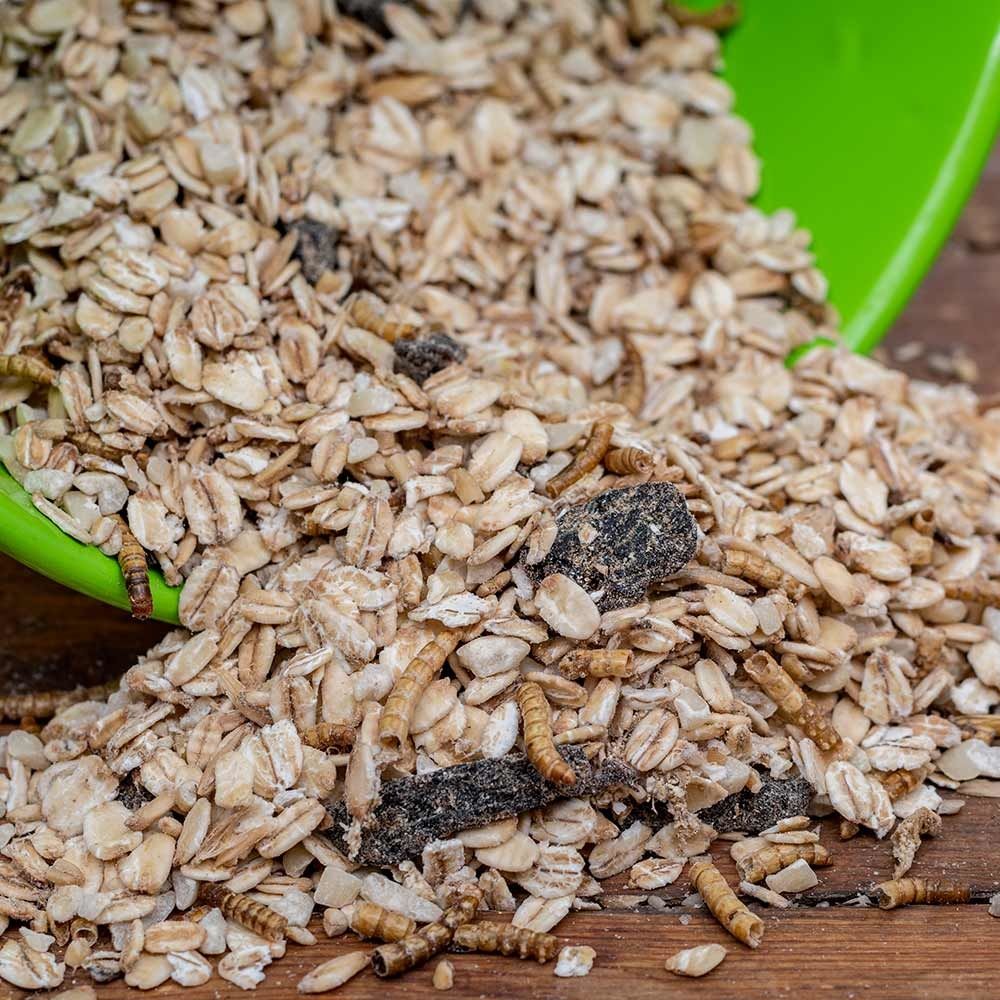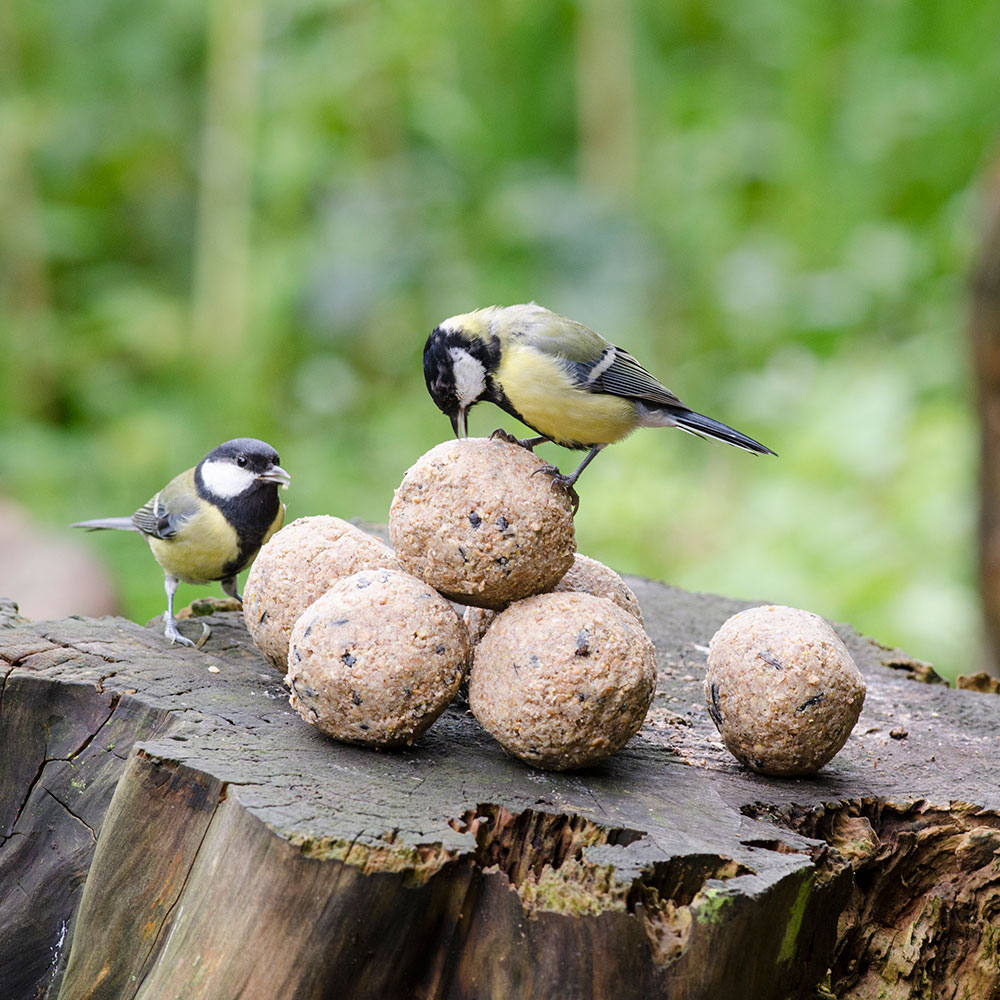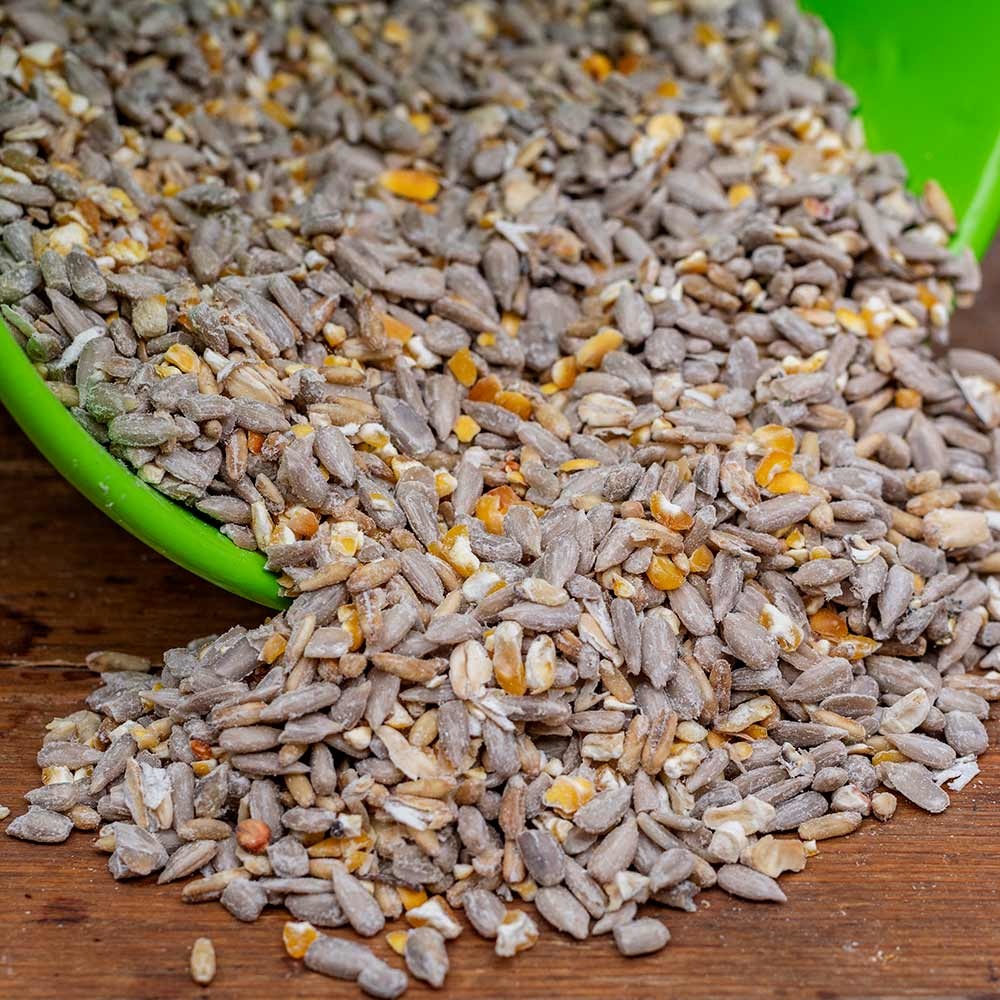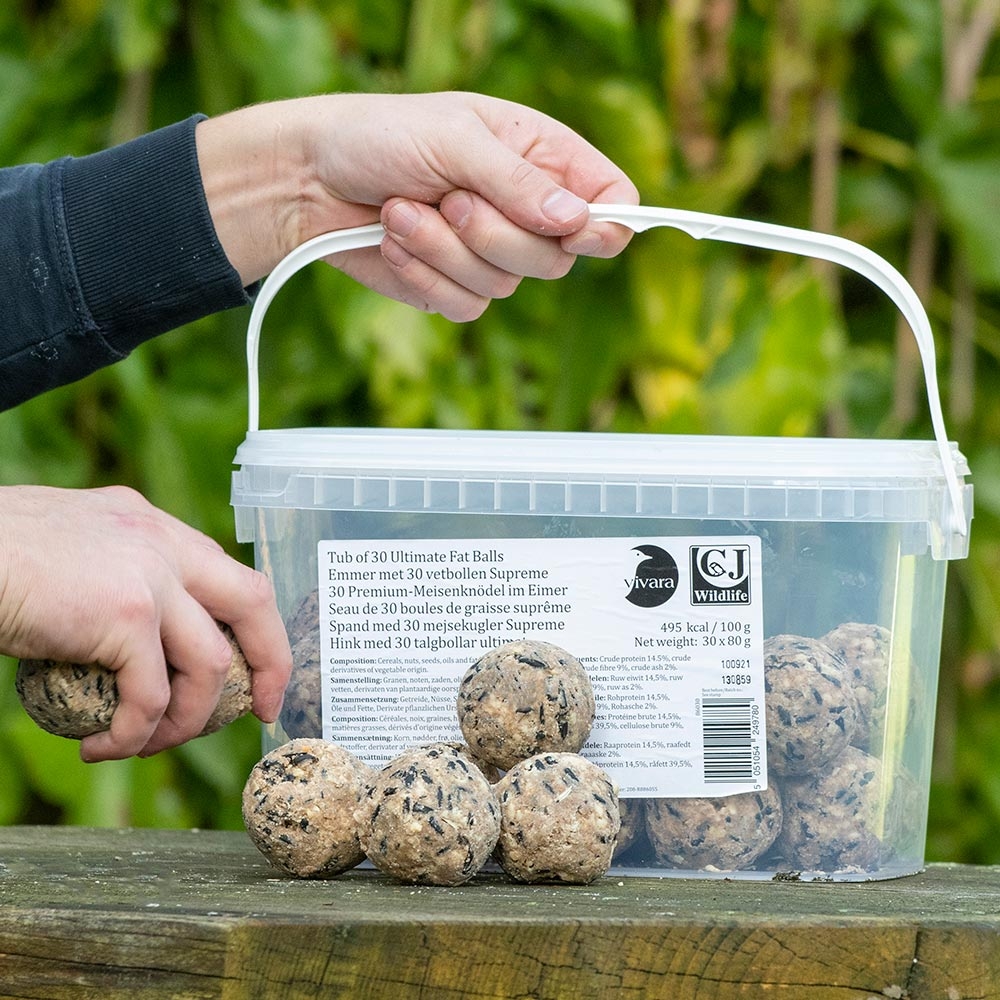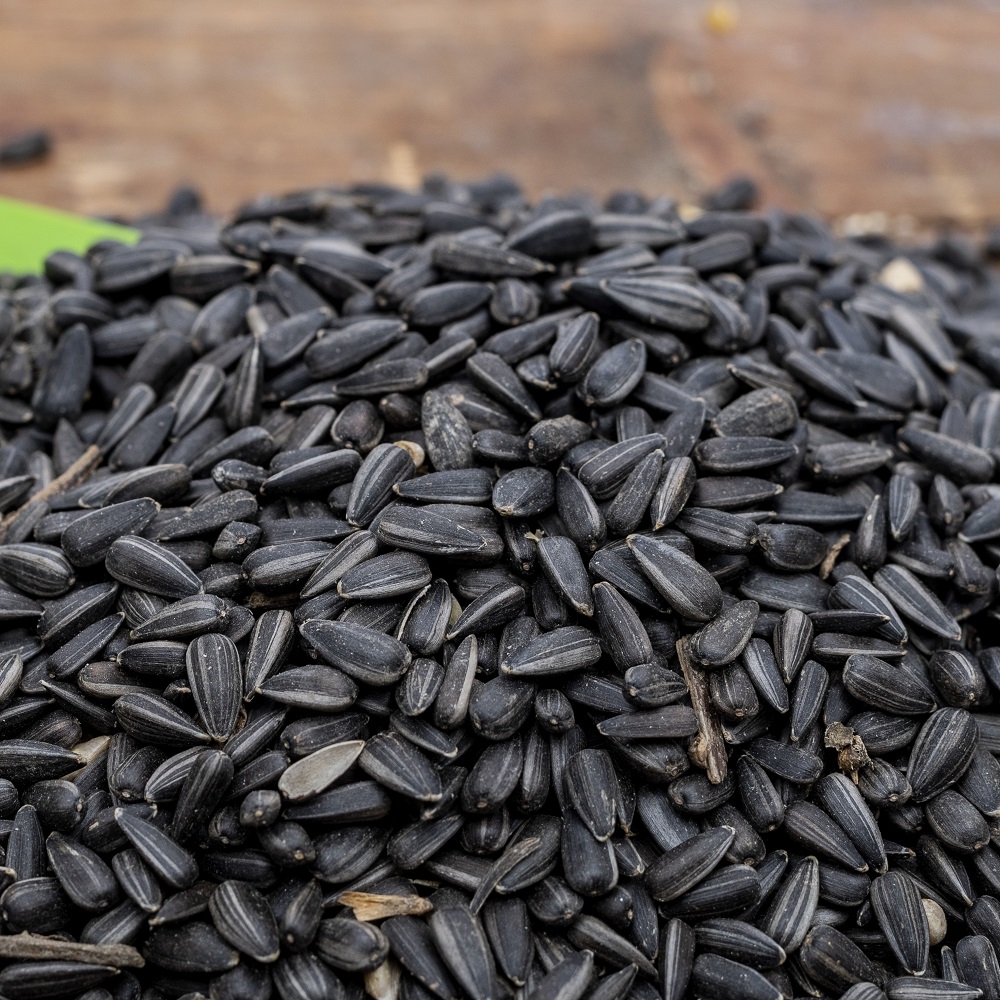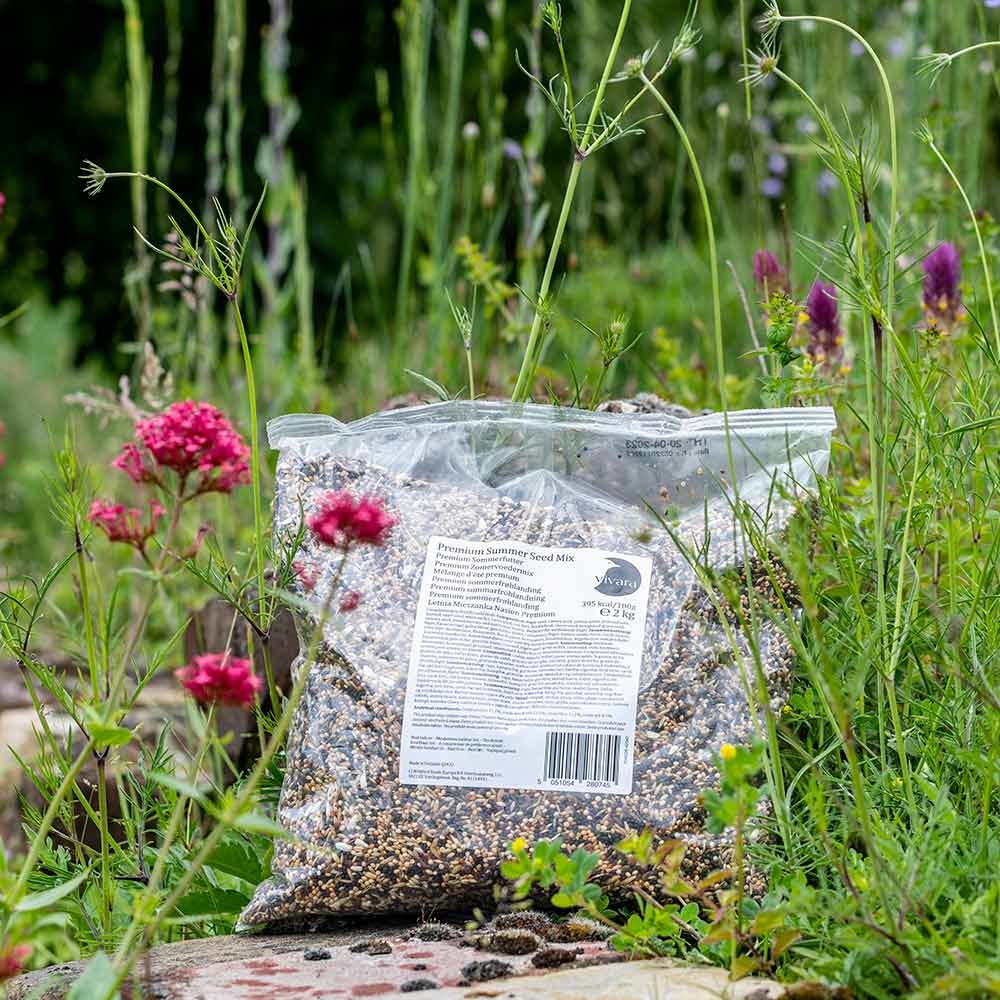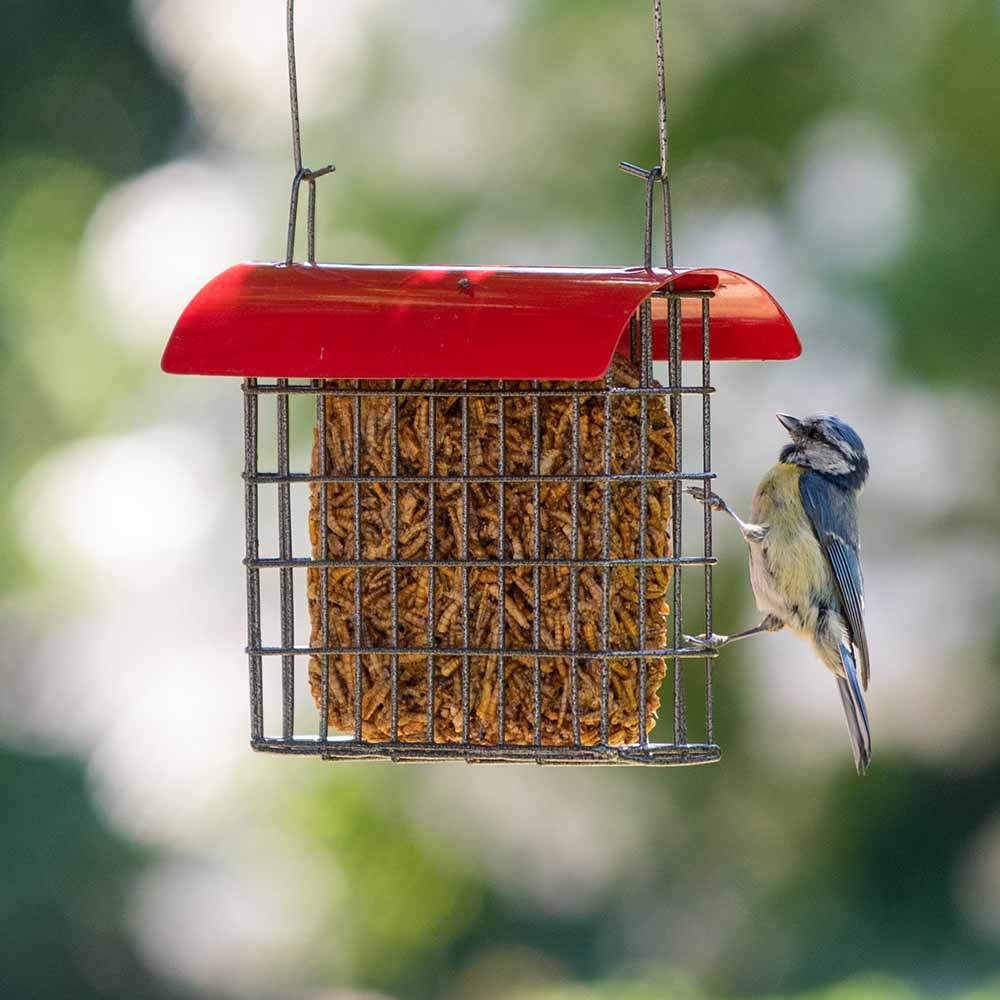Summer Bird Food
Providing the right food for birds in summer ensures they get the essential nutrients they need while attracting a variety of species to your garden. Read more here.
Many people assume that birds don’t need extra food in the warmer months because natural sources like insects, seeds, and berries are more abundant. However, summer brings its own challenges for birds. Parent birds are busy feeding their chicks and many species begin their annual molt, requiring extra protein and energy. By offering a carefully selected range of summer bird food, you can support local wildlife while enjoying the beauty of birds visiting your garden.
Why feed birds in summer?
Feeding birds is often associated with winter, when natural food is scarce. However, there are several reasons why it’s just as important to provide food during the summer months.
- Extra energy for nesting birds – Summer is a busy breeding season. Many birds are raising their young and need high protein foods to sustain themselves and feed their chicks.
- Support during molting – After the breeding season, birds go through their annual molt, shedding old feathers and growing new ones. This process requires a protein-rich diet to ensure strong feather growth.
- Hydration and nutrition – Hot weather can dry out natural food sources, making it harder for birds to find fresh and nutritious meals. Supplying high-energy foods and fresh water can make a big difference.
- Encouraging birds to stay in your garden – By providing a reliable food source, you can attract a variety of bird species to your garden, giving you the opportunity to observe them up close.
Best summer bird food options
Not all bird food is suitable for summer feeding. Some options can spoil quickly in the heat, while others provide the essential nutrients that birds need during this active season. The best summer bird food choices are those that are high in protein, easy to digest, and unlikely to spoil in warm temperatures.
Protein-rich foods
Protein is essential for birds, especially during nesting and molting. Some of the best high-protein options include:
- Mealworms – Mealworms are a favorite among insect-eating birds like robins, blue tits, and blackbirds. They provide an excellent source of protein and energy.
- Sunflower hearts – These are rich in healthy fats and easy to eat since they have no husks, making them a great choice for all bird species.
- Suet pellets – Unlike traditional suet blocks, which can melt in warm weather, suet pellets offer a mess-free alternative that provides energy without becoming greasy.
Seeds and nuts
Seeds and nuts are a staple for many garden birds and can be a great addition to a summer feeding routine. The best options include:
- Nyjer seeds – These tiny black seeds are loved by goldfinches and siskins. They are rich in oil and energy, making them an excellent summer food.
- Millet – Small birds such as sparrows enjoy millet, which is easy to digest and provides important nutrients.
What to avoid feeding birds in summer
While it’s important to offer nutritious food, there are some foods that should be avoided during summer. These can either spoil quickly in the heat or pose risks to birds.
- Fatty suet blocks – Traditional suet blocks melt in warm weather, becoming greasy and potentially harmful to birds’ feathers. Opt for suet pellets instead.
- Stale or moldy food – Heat and humidity cause food to spoil faster, leading to harmful bacteria and fungi. Always check food freshness before placing it in feeders.
- Large seeds or whole peanuts – These can be difficult for smaller birds and their chicks to eat safely.
Tips for feeding birds in summer
To make the most of summer bird feeding, follow these essential tips to keep your garden birds healthy and safe.
- Use the right feeders – Choose feeders that suit the type of food you are offering. Mesh feeders are best for peanuts, tube feeders work well for seeds, and open trays can be used for mealworms.
- Clean feeders regularly – Warm weather increases the risk of bacteria and mold growth. Wash feeders at least once a week with water to keep them hygienic.
- Provide fresh water – Birds need clean water for drinking and bathing, especially in hot weather. Place a shallow dish or birdbath in a shady area and refill it daily.
- Feed early or late in the day – Offering food in the morning or evening helps prevent spoilage in direct sunlight and ensures birds have access to fresh food when they need it most.
- Keep feeding areas shaded – Position feeders and food trays in shaded areas to prevent food from becoming too hot or deteriorating quickly.
Create a bird-friendly garden this summer
By providing the right food and maintaining a clean feeding environment, you can help garden birds thrive throughout the summer months. A well-fed bird is a healthy bird and with the right choices, you can attract a wide variety of species to your outdoor space.
At CJ Wildlife, we offer a specially selected range of high-quality summer bird food designed to support birds during this important season. Explore our summer bird food collection today and make your garden a haven for wildlife!



